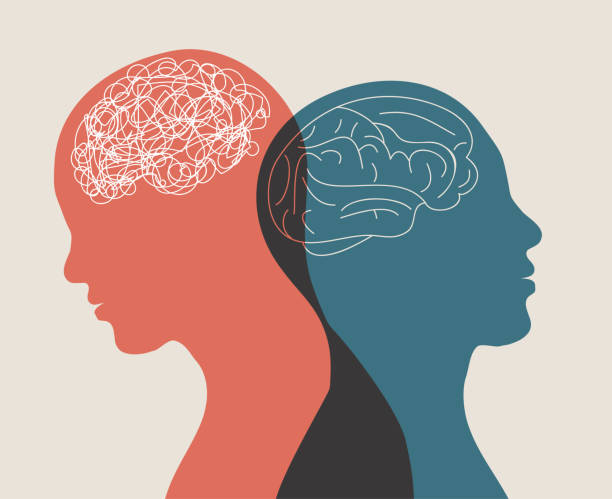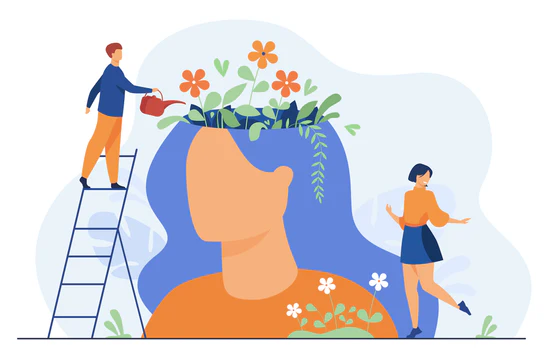Introduction
Move over minimalism—grandmacore has entered the chat! From floral wallpaper to knitting clubs, “grandma things” are suddenly cool again. But what’s behind this unexpected trend? Psychologists suggest that grandmacore is more than just an aesthetic; it’s a coping mechanism for a world overloaded with screens, stress, and uncertainty.
Read More: Mental Health and Sleep
Why We’re Craving Grandma Vibes
The grandmacore movement emphasizes comfort, slowness, and tradition—qualities we’re missing in our hyper-digital lives. Hobbies like baking sourdough bread, embroidery, and gardening are tactile and embodied, standing in sharp contrast to the intangible experience of scrolling on a phone. Research has consistently shown that slow, mindful activities can reduce stress and enhance well-being (Brown & Ryan, 2003). When individuals engage in hands-on tasks, they experience what Csikszentmihalyi (1990) famously described as flow, a state of deep immersion that boosts mood and satisfaction.

This shift can also be understood as a rebellion against hustle culture. Millennials and Gen Z, faced with precarious job markets, social media overload, and global crises, are rejecting “always-on” productivity in favor of slower living. In fact, studies on leisure suggest that restorative hobbies provide essential psychological recovery from daily stressors (Sonnentag & Fritz, 2007). So, while knitting may look like an “old-fashioned” activity, it may actually be a scientifically grounded strategy for combating burnout.
Nostalgia as Psychological Armor
Grandmacore also taps into the psychology of nostalgia. Nostalgia isn’t just sentimental—it’s a resilience tool. Sedikides and Wildschut (2019) found that nostalgia boosts positive affect, increases social connectedness, and even provides a sense of existential meaning. When we sip tea from a vintage cup or play old-fashioned card games, we’re doing more than indulging in aesthetics—we’re drawing psychological strength from connections to the past.
Nostalgia has also been linked to reduced loneliness and increased optimism (Wildschut et al., 2006). In uncertain times, such as the COVID-19 pandemic, nostalgia became a widespread coping mechanism. Batcho (2020) argued that nostalgia during crises functions as an anchor, reminding individuals of stability and continuity when the present feels unpredictable. Grandmacore reflects this: people are retreating to “grandma’s ways” as a symbolic refuge from chaos.
Cozy Hobbies and Mental Health
The specific activities associated with grandmacore—knitting, baking, gardening—are not only quaint but also empirically supported as beneficial for mental health. For example:
- Knitting has been found to promote relaxation and reduce anxiety symptoms (Riley, Corkhill, & Morris, 2013).
- Gardening is linked to reductions in depression and anxiety, as well as improvements in overall well-being (Soga, Gaston, & Yamaura, 2017).
- Baking supports mindfulness and creativity, which in turn buffer stress (Pope, 2016).
The communal element of these hobbies also matters. Group-based craft or gardening activities enhance social bonding and collective efficacy, which are protective factors against mental health struggles (Leckey, 2011). Whether online crochet forums or local knitting circles, grandmacore provides social scaffolding in a time when loneliness has been described as an epidemic (Hawkley & Cacioppo, 2010).
The Science of Slowing Down
Psychologists have long recognized the importance of slowing down and savoring life. The construct of savoring, defined as attending to and enhancing positive experiences, is linked to greater life satisfaction and well-being (Bryant & Veroff, 2007). Grandmacore is essentially a lifestyle built around savoring: savoring the warmth of tea, the smell of a pie baking, or the satisfaction of finishing a cross-stitch project.

Additionally, self-determination theory posits that humans need autonomy, competence, and relatedness for optimal well-being (Deci & Ryan, 2000). Cozy hobbies fulfill all three needs: individuals freely choose their activities (autonomy), develop mastery over skills like sewing or gardening (competence), and often share them with others (relatedness).
Grandmacore as Quiet Resistance
Beyond individual psychology, grandmacore may also be understood as a cultural critique. Sociologists note that aesthetic movements often emerge as resistance against dominant paradigms. Just as punk rebelled against consumerist conformity, grandmacore rebels against fast-paced capitalism and digital hyper-connectivity. By choosing to knit a scarf rather than buy one from Amazon, practitioners are making a small but symbolic act of resistance. While this article is focused on psychology, it’s worth noting how lifestyle choices reflect deeper societal tensions.

A Multigenerational Bridge
Interestingly, grandmacore doesn’t just soothe stressed-out young people—it also connects them to older generations. Intergenerational learning, such as passing down recipes or crafts, has been shown to foster empathy and reduce age-related stereotypes (Kaplan, 2002). When younger individuals adopt “grandma activities,” they create continuity across generations, strengthening identity and belonging. This intergenerational exchange provides psychological grounding, helping individuals situate themselves within a broader human story.
Conclusion
So the next time you light a lavender candle, brew some chamomile, and settle down with a jigsaw puzzle—you’re not just relaxing. You’re participating in a psychological movement that says comfort is powerful. Grandmacore is more than a quirky TikTok aesthetic; it’s an empirically supported toolkit for mental well-being. By engaging in cozy, nostalgic practices, people are not escaping reality—they’re building resilience, savoring joy, and finding meaning in the small moments.
References
Batcho, K. I. (2020). Nostalgia: Retreat or support in difficult times? American Journal of Psychology, 133(4), 457–466. https://doi.org/10.5406/amerjpsyc.133.4.0457
Brown, K. W., & Ryan, R. M. (2003). The benefits of being present: Mindfulness and its role in psychological well-being. Journal of Personality and Social Psychology, 84(4), 822–848. https://doi.org/10.1037/0022-3514.84.4.822
Bryant, F. B., & Veroff, J. (2007). Savoring: A new model of positive experience. Psychology Press.
Csikszentmihalyi, M. (1990). Flow: The psychology of optimal experience. Harper & Row.
Deci, E. L., & Ryan, R. M. (2000). The “what” and “why” of goal pursuits: Human needs and the self-determination of behavior. Psychological Inquiry, 11(4), 227–268. https://doi.org/10.1207/S15327965PLI1104_01
Hawkley, L. C., & Cacioppo, J. T. (2010). Loneliness matters: A theoretical and empirical review of consequences and mechanisms. Annals of Behavioral Medicine, 40(2), 218–227. https://doi.org/10.1007/s12160-010-9210-8
Kaplan, M. (2002). Intergenerational programs in schools: Considerations of form and function. International Review of Education, 48(5), 305–334. https://doi.org/10.1023/A:1021243219903
Leckey, J. (2011). The therapeutic effectiveness of creative activities on mental well-being: A systematic review of the literature. Journal of Psychiatric and Mental Health Nursing, 18(6), 501–509. https://doi.org/10.1111/j.1365-2850.2011.01693.x
Pope, L. (2016). Baking as a mindful practice: A therapeutic approach. Journal of Positive Psychology, 11(6), 543–550. https://doi.org/10.1080/17439760.2015.1117125
Riley, J., Corkhill, B., & Morris, C. (2013). The benefits of knitting for personal and social wellbeing in adulthood: Findings from an international survey. British Journal of Occupational Therapy, 76(2), 50–57. https://doi.org/10.4276/030802213X13603244419077
Sedikides, C., & Wildschut, T. (2019). The sociality of personal and collective nostalgia. European Review of Social Psychology, 30(1), 123–173. https://doi.org/10.1080/10463283.2019.1630092
Soga, M., Gaston, K. J., & Yamaura, Y. (2017). Gardening is beneficial for health: A meta-analysis. Preventive Medicine Reports, 5, 92–99. https://doi.org/10.1016/j.pmedr.2016.11.007
Sonnentag, S., & Fritz, C. (2007). The recovery experience questionnaire: Development and validation of a measure for assessing recuperation and unwinding from work. Journal of Occupational Health Psychology, 12(3), 204–221. https://doi.org/10.1037/1076-8998.12.3.204
Wildschut, T., Sedikides, C., Arndt, J., & Routledge, C. (2006). Nostalgia: Content, triggers, functions. Journal of Personality and Social Psychology, 91(5), 975–993. https://doi.org/10.1037/0022-3514.91.5.975
Subscribe to PsychUniverse
Get the latest updates and insights.
Join 3,005 other subscribers!
Niwlikar, B. A. (2025, September 10). Discover Grandmacore and the Fascinating Science of Slowing Down. PsychUniverse. https://psychuniverse.com/grandmacore-and-science-of-slowing-down/



